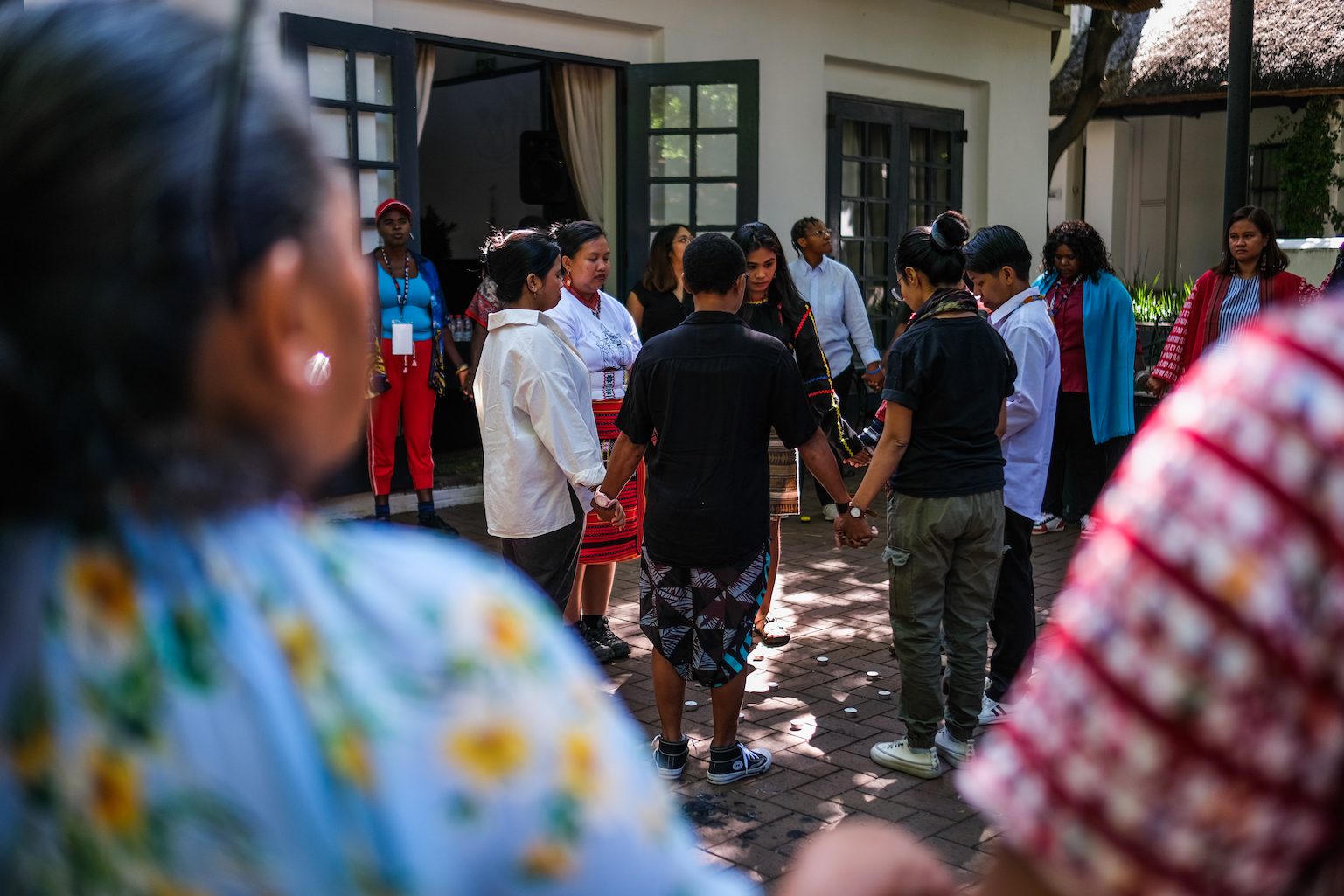



By María Suárez Toro, and RIF-Fire Communications Center
Feminist International Camp
Translation by Amandla Gigler, Executive Director at CALALA Fondo de Mujeres / Women’s Fund
Lise Marie Jean, a feminist leader from SOFA in Haiti, warned us about the situation of buried historical records, during a gathering of over three dozen Latin American and Caribbean feminists, in the Dominican Republic on January 26-27. She told us that Haitian women grieve over the irreparable loss of many lives, “but also because buried under the rubble of what was EnfoFam’s office, is the historical record of the origins of feminism in our country, as this was the first [feminist] organization.” She told us about the damage to Kay Fam, another feminist organization, the national library buried in the center of the city and the documentation centers on culture, human rights and other issues.
We went to Port au Prince to honor the thousands of people, including feminist leaders, who had died, to show solidarity with the people who had survived, to bring humanitarian aid and to alleviate other needs, and to see what more could be done. And while we covered the news from our feminist gaze, we knew we had to say farewell to our historical memory in Haiti, also.
Feminists in the region had already agreed at the meeting that all of the communication networks will excavate Haitian interviews and documents that they have in their own records of the past 30 years. The Latin American and Caribbean Network of Journalists, the Feminist International Radio Endeavor and the Center for Feminist Research and Action (CAFRA) are launching a call to others.
Upon reaching the city, we ask Lise Marie to take us to the ruins of EnfoFanm’s locale, to document the reality. It was a two-story house in a suburb near the city. Our gazes cloud over at the site of the old sign with the name of the organization that sways in the Caribbean breeze, hitting the shattered cement.
We find ourselves against the grain of the first guardian of history. Madame Lisie comes over from the house across the street to tell us that we cannot enter.
But she knows Lise Marie, who is accompanied by Flavia Cherry with RIF’s camera. I arrived later. They filmed to tell the world. When I arrive, I’m reluctant to make my farewell. “They are there, intact, look at them!”
We must make an appeal to UNESCO and UNIFEM to come recue them. The building, although it is destroyed, still has its frame standing, although it is extremely vulnerable. Some things inside are visible. There are the files. We return the next day with Silvie from the Ecumenical Center for Human Rights. The guardian comes out like a friend, but we explain ourselves and she speaks with us. We thank her for her vigilance and go on to our next encounter with the present and the past. We see that the Executive Secretary of the organization arrived this morning. This makes us glad. Whatever can be saved should be placed in her hands; this is the legacy of the protagonist-guardians.
We go to the second locale, Kay Fanm’s office. Again we are intercepted immediately. This time is a young Canadian man – Etienne Cote-Paluck – who is protecting the locale, this one not completely destroyed, but not habitable. All of the activists were unharmed, except the organization’s director, Magali Marcelin, who, when the earthquake struck, had just stepped out of a building where she was in a meeting.
He asks us for identification and explanations. He lets us in and tell us what has happened. He breaks down in the middle of the story. “Magali was a second mother to me. I am the son of a Canadian feminist and the truth is that they raised me! “
He tells us that he already knows about the International Feminist Camp and is working to provide coverage to MSNBC in Canada, and he wants to interview us. He carries out his journalism from his position as guardian of memory.
Magali lives among us and the new generation of young people who were marked by her. I am encouraged.
The third visit is the office of the “Ministry for the Status of Women and the Rights of Women”. All that remained standing was the sign that faces the street. The view is horrible. Not one stone is left to support another.
The silence embraces us, the rubble shakes us, legs falter, instincts are incite, although if the ground were to tremble there’s nothing that could fall. Two floors of concrete lying on the floor like paper watered by the wind.
At the entrance there is no guardian. Myriam Merlet, one of the feminists who passed, who with others founded Enfo Fanm, had put so much political strength to that Ministry. The Minister and many staff had also died.
I pick up a page, out of all the scattered material between pieces of concrete. It is an invitation dated 10 May 2007, addressed to the Minister, for a “National Forum on Education for All”. The Minister of that time was Marie Laurence Lassegue, the current Minister of Culture, one of the survivors.
My hand shakes. It seems incredible that a piece of paper can suddenly be charged with so much meaning. I don’t know if it is the first piece of history that is recovered, but I’m taking a Haitian women’s organization for their museum, or perhaps I’ll look for the Minister of Culture when the time is right, to request assistance from UNESCO and UNIFEM to recover the memory.
A deep sadness mixes in me with the wind on a road toward the recovery of memory. I pay tribute to those missing from history, so that we do not lose them.